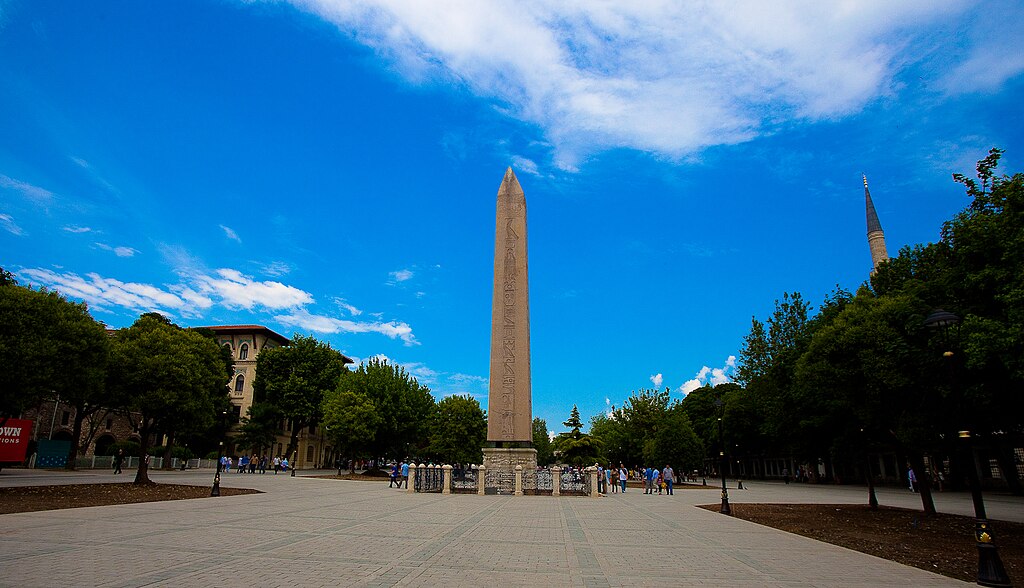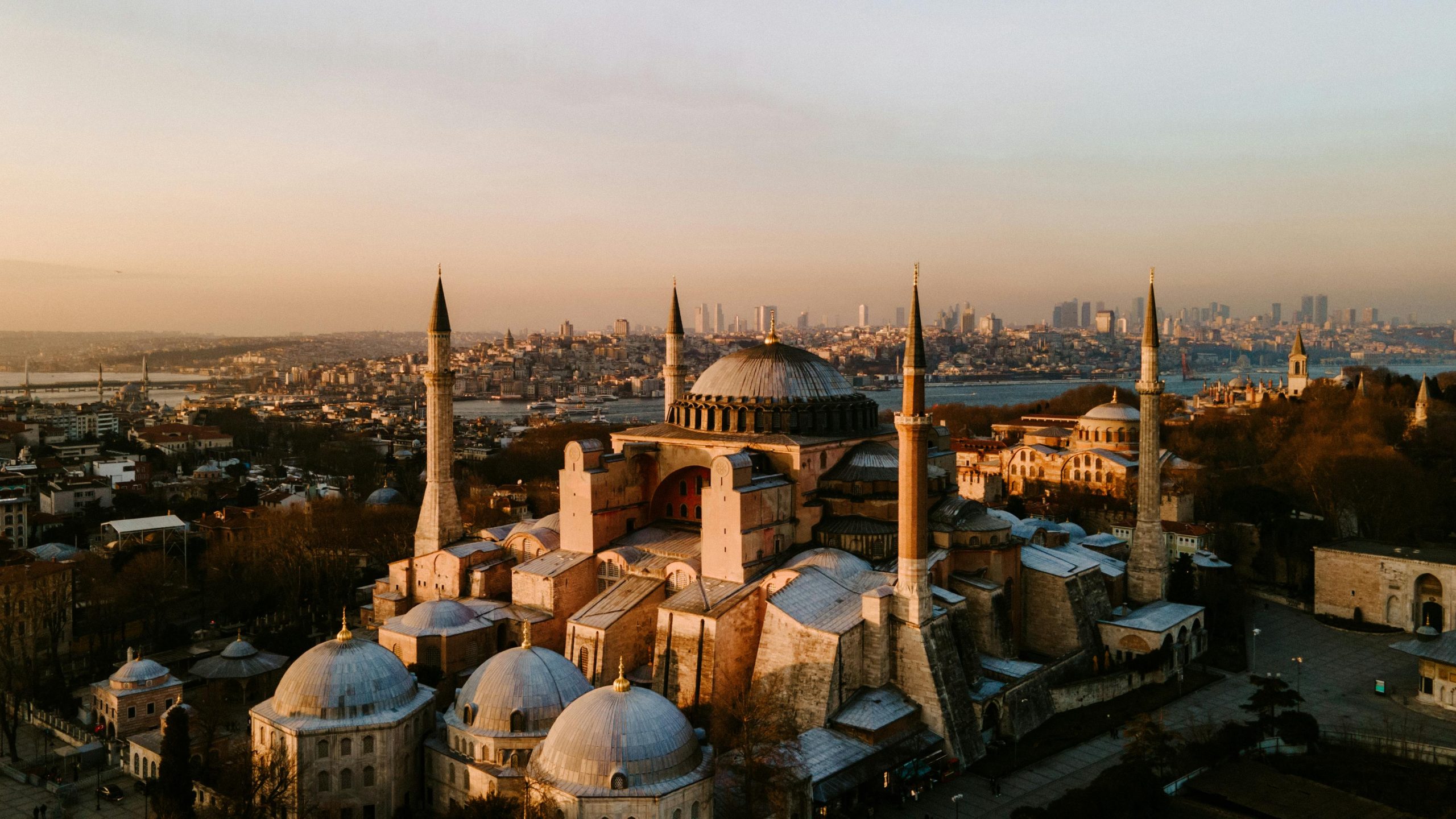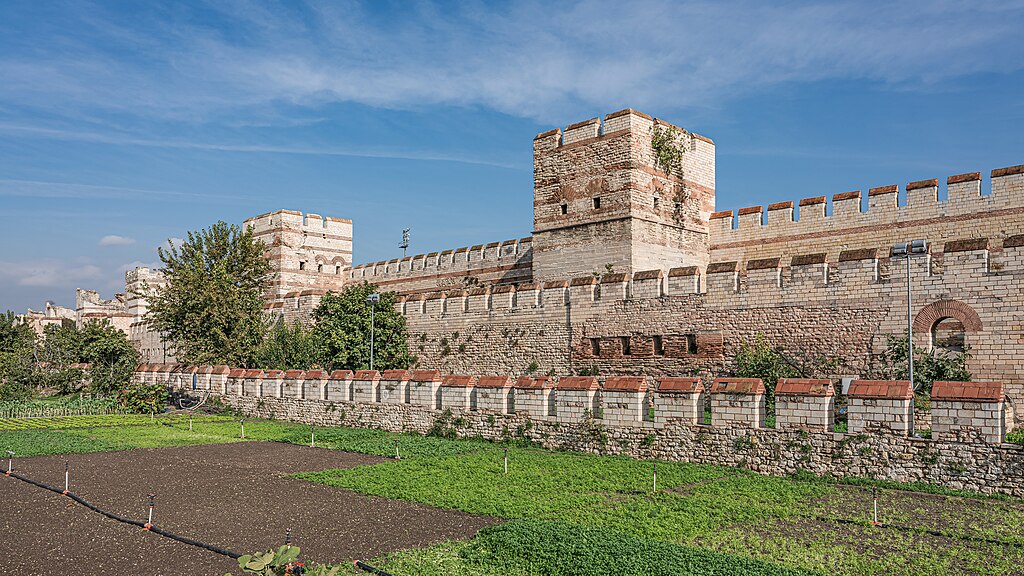Obelisk of Theodosius, Istanbul
Historic Site in Istanbul

Standing proudly at the center of Sultanahmet Square, the Obelisk of Theodosius is not just one of the top sights in Istanbul — it's one of the oldest monuments in the world still standing. Originally commissioned by Pharaoh Thutmose III in the 15th century BCE, this pink granite column once towered over the great temple complex of Karnak in Luxor, Egypt. More than a millennium later, the Romans transported its upper section to Constantinople, where Emperor Theodosius I had it raised in 390 CE on a marble pedestal adorned with intricate reliefs. It's a masterpiece of both Egyptian craftsmanship and Roman-Byzantine adaptation, bridging continents and civilizations in one striking monument.
The obelisk rises from the heart of the ancient Hippodrome — now Sultanahmet Square — surrounded by the Blue Mosque, Hagia Sophia, and other monumental symbols of the city. It's one of the best places to visit in Istanbul for anyone seeking traces of its layered past, from pharaonic Egypt to Christian Constantinople and beyond. Often visited on walking tours of Istanbul, this remarkable monument continues to awe travelers with its age, artistry, and timeless grace.
Table of Contents
- History and Significance of the Obelisk of Theodosius
- Things to See and Do at the Obelisk of Theodosius
- How to Get There
- Practical Tips on Visiting the Obelisk of Theodosius
- Is the Obelisk of Theodosius worth visiting?
- FAQs for Visiting the Obelisk of Theodosius
- Nearby Attractions to the Obelisk of Theodosius
History and Significance of the Obelisk of Theodosius
Originally erected around 1450 BCE by Thutmose III at the temple of Karnak, the obelisk was carved from a single block of red granite quarried in Aswan. Its hieroglyphic inscriptions celebrate the Pharaoh's military triumphs over the Mitanni, an ancient kingdom in northern Mesopotamia. The monument stood for over a thousand years in Egypt before the Romans decided to move it to their eastern capital, Constantinople, as part of Emperor Theodosius I's grand plan to beautify the Hippodrome.
In 390 CE, Roman engineers transported the top third of the obelisk — the only section that survived the journey — and re-erected it atop a marble base in the center of the Hippodrome. The pedestal is decorated with detailed carvings showing Theodosius presenting a laurel wreath to victorious athletes and presiding over games from the Kathisma, or imperial viewing box. Remarkably, the hieroglyphs remain crisp even after more than 3,400 years, making this one of the best-preserved ancient obelisks outside Egypt.
Things to See and Do at the Obelisk of Theodosius
Take time to walk around the obelisk's marble pedestal and admire its rich carvings, which depict scenes of imperial ceremony and public spectacle. Look closely at the Latin and Greek inscriptions on the base — they praise Theodosius for the engineering feat of re-erecting such a massive monument “in just thirty-two days.” The obelisk's hieroglyphs, meanwhile, tell an entirely different story, celebrating Thutmose's victories and divine favor from Amun-Ra.
Standing before the obelisk, visitors experience a rare moment of temporal contrast — Egyptian, Roman, and Byzantine worlds converging in a single space. Nearby, you can also see the Serpent Column and the Walled Obelisk, both remnants of the Hippodrome's long history as Constantinople's ceremonial and sporting center. The site offers endless photo opportunities, especially with the Blue Mosque rising elegantly in the background.
How to Get There
The Obelisk of Theodosius stands in Sultanahmet Square, the former Hippodrome of Constantinople, in the heart of Istanbul's Old City. The T1 tram line stops at Sultanahmet station, just a few minutes' walk from the monument. For visitors arriving by train, Sirkeci railway station is around a 15-minute walk away. You can use the official TCDD Taşımacılık website to check schedules, compare routes, and purchase tickets for Turkey's national and regional trains operated by TCDD. For a more streamlined experience (especially if you prefer an English interface or want to compare across countries), we recommend using Omio, which allows you to easily compare prices, schedules, and book train tickets across Turkey and the rest of Europe — all in one place. If you're driving, note that parking in Sultanahmet is limited; nearby paid parking can be found along Kennedy Avenue and Cankurtaran. If you are looking to rent a car in Turkey I recommend having a look at Discover Cars, first, as they compare prices and review multiple car rental agencies for you.
Practical Tips on Visiting the Obelisk of Theodosius
- Best time to visit the Obelisk of Theodosius: Early morning or evening for soft light and fewer crowds.
- Entrance fee in Euros: Free.
- Opening hours: Accessible 24 hours daily as part of Sultanahmet Square.
- Official website: Not applicable.
- How long to spend: Around 15–30 minutes.
- Accessibility: Fully accessible with flat, paved walkways.
- Facilities: Benches, fountains, and cafés nearby.
- Photography tip: Capture the obelisk from a low angle with the Blue Mosque in the background for a dramatic shot.
- Guided tours: Included in most Old City or Hippodrome walking tours.
- Nearby food options: Street vendors and cafés serving simit, Turkish tea, and kebabs along the square.
Is the Obelisk of Theodosius worth visiting?
Definitely. The Obelisk of Theodosius is one of the most extraordinary monuments in Istanbul — a 3,500-year-old artifact standing proudly amid the city's Byzantine heart. It connects visitors directly to the pharaohs of ancient Egypt and the emperors of Rome, making it one of the must-see places in Istanbul for lovers of history, archaeology, and timeless architecture.
FAQs for Visiting the Obelisk of Theodosius
How old is the Obelisk of Theodosius?
It dates back to around 1450 BCE, making it over 3,400 years old.
Who brought it to Istanbul?
Emperor Theodosius I had it transported from Egypt and re-erected in Constantinople in 390 CE.
Is it the full obelisk from Egypt?
No, it's only the top third of the original monument from Karnak Temple.
Can I get close to it?
Yes, the obelisk stands in an open area and can be viewed up close from all sides.
Is it illuminated at night?
Yes, soft lighting makes it visible and atmospheric after dark.
Nearby Attractions to the Obelisk of Theodosius
- Serpent Column – A 5th-century BCE bronze monument brought from Delphi, symbolizing Greek unity and victory.
- Walled Obelisk – A 10th-century masonry monument built under Emperor Constantine VII.
- Blue Mosque – A stunning Ottoman mosque famed for its domes and blue İznik tiles.
- Hagia Sophia – The legendary cathedral-turned-mosque and UNESCO World Heritage Site.
- German Fountain – A 19th-century neo-Byzantine pavilion marking Sultanahmet's northern edge.
The Obelisk of Theodosius appears in our Complete Guide to Visiting Istanbul!
This website uses affiliate links which may earn a commission at no additional cost to you!
Visiting Obelisk of Theodosius
Accessible 24 hours daily as part of Sultanahmet Square.
Free
Nearby Attractions
- Serpent Column (0.0) km
Historic Site in Istanbul - Sultanahmet Square (0.1) km
Square in Istanbul - Turkish and Islamic Arts Museum (0.1) km
Museum in Istanbul - Walled Obelisk (0.1) km
Historic Site in Istanbul - Blue Mosque (0.1) km
Mosque in Istanbul - German Fountain (0.2) km
Fountain in Istanbul - Arasta Bazaar (0.2) km
Bazaar in Istanbul - Great Palace Mosaics Museum (0.2) km
Museum in Istanbul - Sultan Ahmet Park (0.3) km
Park in Istanbul - Theodosius Cistern (0.3) km
Historic Site in Istanbul


